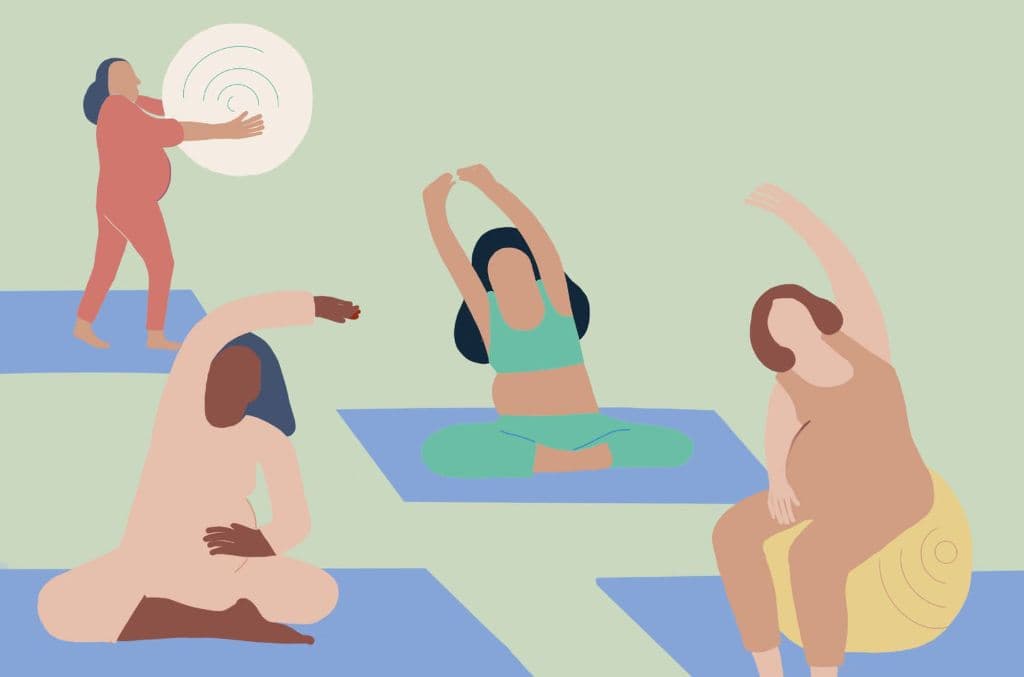Osteoporosis is a bone-weakening disorder, caused due to loss of calcium and other minerals from bones, making them prone to fracturing. Women are more likely to have osteoporosis due to the hormonal changes of menopause that make bone loss worse. Osteoporosis often results in fractures in the hip and spine which can severely impair your mobility and independence.
People with existing osteoporosis can benefit from exercise. This is because a sedentary lifestyle encourages the loss of bone mass. If you have osteoporosis, you might mistakenly think exercise will lead to fracture. Though, using your muscles helps protect your bones. Exercising regularly can reduce the rate of bone loss. Exercise can slow the rate of bone loss, which reduces the risk of osteoporosis-induced fractures.
Who develops osteoporosis?
As per the National Institutes of Health, individuals over 50 years of age are at high risks of breaking a bone due to osteoporosis. Osteoporosis may also lead to broken hips in men, although not as often as in women. Risk factors for osteoporosis include:
- Age over 50
- Family history of osteoporosis
- Inadequate calcium intake
- Narrow-body built
- Smoking
- Medications such as breast cancer treatments, seizure medications, steroids
What are the symptoms of osteoporosis?
Symptoms of bone loss do not occur until osteoporosis develops. Even then, in its early stages, osteoporosis may not cause any symptoms. Symptoms that develop as osteoporosis worsens may include:
- Breaking bones easily.
- Back pain.
- Stooped posture.
- Gradual loss of height.
What are the benefits of exercise for people with osteoporosis?
Little or no exercise in your routine, poor posture, poor balance, and weak muscles, may all lead to an increased risk of fractures. Exercise can help improve osteoporosis in ways, including:
- lesser bone loss
- protecting bone tissue
- better physical fitness
- better muscle strength
- improved mobility
- better balance and coordination
- lesser fall-induced bone fractures
- reduced pain
Exercising if you have osteoporosis means finding the safest, most enjoyable activities for you given your overall health and amount of bone loss. There's no one-size-fits-all prescription.
Before you start
Consult your doctor before starting any exercise program for osteoporosis. You might need some tests first, including:
- Bone density measurement
- Fitness assessment
In the meantime, think about what kind of activities you enjoy most. If you choose an exercise you enjoy, you're more likely to stick with it over time.
Choosing the right form of exercise
These types of activities are often recommended for people with osteoporosis:
- Strength training exercises, especially those for the upper back
- Weight-bearing aerobic activities
- Flexibility exercises
- Stability and balance exercises
Because of the varying degrees of osteoporosis and the risk of fracture, you might be discouraged from doing certain exercises. Ask your doctor or physical therapist whether you're at risk of osteoporosis-related problems, and find out what exercises are appropriate for you.
Strength training
Strength training includes the use of free weights, resistance bands, or your body weight to strengthen all major muscle groups, especially spinal muscles important for posture. Resistance training can also help maintain bone density. If you use weight machines, take care not to twist your spine while performing exercises or adjusting the machines. Ask your physical therapist/personal trainer for a strength training routine.
Weight-bearing aerobic activities
Weight-bearing aerobic activities involve doing aerobic exercise on your feet, with your bones supporting your weight. Examples include walking, dancing, low-impact aerobics, elliptical training machines, stair climbing, and gardening. These types of exercises work directly on the bones in your legs, hips and lower spine to slow mineral loss. They also provide cardiovascular benefits, which boost heart and circulatory system health.
Flexibility exercises
Moving your joints through their full range of motion helps you keep your muscles working well. Stretches are best performed after your muscles are warmed up — at the end of your exercise session, for example, or after a 10-minute warm-up. They should be done gently and slowly, without bouncing. Avoid stretches that flex your spine or cause you to bend at the waist. Ask your doctor which stretching exercises are best for you.
Stability and balance exercises
Fall prevention is especially important for people with osteoporosis. Stability and balance exercises help your muscles work together in a way that keeps you more stable and less likely to fall. Simple exercises such as standing on one leg or movement-based exercises such as tai chi can improve your stability and balance.
What movements should be avoided by people with osteoporosis?
If you have low bone mass, experts recommend that you protect your spine by avoiding exercises or activities that flex, bend, or twist it. Furthermore, you should avoid high-impact exercise to lower the risk of breaking a bone.
- High-impact exercises: Activities such as jumping, running, or jogging can lead to fractures in weakened bones. Avoid jerky, rapid movements in general.
- Bending and twisting: Exercises in which you bend forward at the waist and twist your waist, such as touching your toes or doing sit-ups, can increase your risk of compression fractures in your spine if you have osteoporosis. Other activities that may require you to bend or twist forcefully at the waist are golf, tennis, bowling and some yoga poses.
If you're not sure how healthy your bones are, talk to your doctor. Don't let fear of fractures keep you from having fun and being active.
There is no single exercise plan that's best for everyone with osteoporosis. The routine you choose should be unique to you and based on your:
- Fracture risk
- Muscle strength
- Range of motion
- Level of physical activity
- Fitness
- Gait
- Balance
All forms of physical activity will help keep your bones strong and healthy and reduce the risk of falling.
Children and young people
Childhood, adolescence, and early adulthood, when the skeleton is growing, are the time for building healthy bones. Children and young people should take part in moderate-to-vigorous intensity physical activity for an average of at least 60 minutes a day across the week.
Infants (less than 1 year)
Examples of muscle and bone-strengthening activities include:
- tummy time
- active play
- crawling
Children and young people (up to 18 years old)
Examples of bone-strengthening activities include:
- gymnastics
- football
- jumping
- martial arts
Adults (over 19 years old)
Most muscle-strengthening or resistance exercise improves bone health. Do it at least 2 days a week.
Examples of activities for adults include:
- circuit or resistance training
- aerobics
- ball games
- tennis or racquet sports
- running
- dance
Older adults
Examples of activities for active older adults include:
- walking
- lifting weights or using resistance bands
- some impact activities like running, jumping, or skipping
If you're not very active, these activities may help:
- walking
- stair climbing
- strength exercises at home
To reduce the chance of falls, older adults are recommended to include activities that help with balance at least 2 days a week. For example:
- tai chi
- bowls
- dance
Final Words
Regular exercise can help you build strong bones and slow bone loss. You can combine strength training exercises with weight-bearing and balance exercises. While strength training will strengthen muscles and bones in your arms and upper spine, weight-bearing exercises — such as jogging, running, etc will strengthen the bones in your legs, hips, and lower spine.
Disclaimer - This information is provided for educational purposes and should not be construed as medical advice. Please consult with your healthcare practitioners before undertaking any changes in your diet or adding supplements.
Proactive For Her is a digital clinic for women, offering accessible, personalized, and confidential healthcare solutions. We offer products and services for out-patient health concerns of Indian women, across their lifetime - from puberty to pregnancy to menopause. To know more on the sexual and reproductive health of women, visit https://www.proactiveforher.com/

